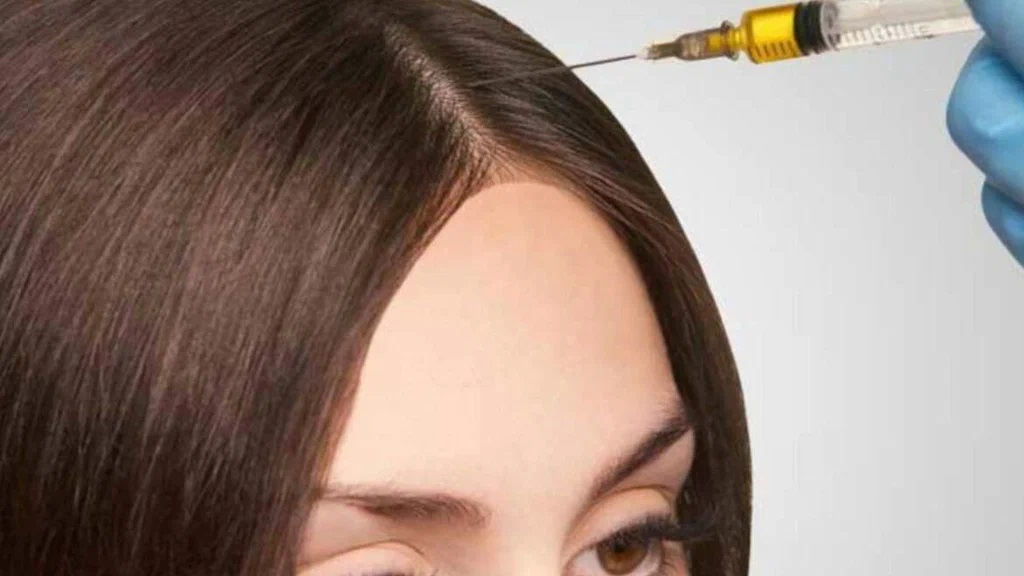Platelet-Rich Plasma therapy has become a highly sought-after solution for hair loss and skin rejuvenation in Islamabad. Known for its natural and effective approach, PRP in Islamabad uses the patient’s own blood to stimulate hair follicles, enhance scalp health, and promote skin regeneration. One of the most common questions patients have is about treatment frequency and tips to achieve the best results. This blog will guide you through how often PRP sessions are recommended and essential tips to optimize outcomes.
Understanding PRP Therapy
PRP therapy is a non-surgical procedure that utilizes platelet-rich plasma derived from the patient’s blood. The process involves drawing a small amount of blood, centrifuging it to concentrate the platelets, and injecting it into the scalp or skin. The growth factors in PRP stimulate dormant hair follicles, enhance collagen production, and improve blood circulation, resulting in healthier hair and rejuvenated skin.
Recommended Treatment Frequency
The frequency of PRP sessions depends on the area being treated, the severity of the condition, and individual patient response.
1. Initial Treatment Phase
For most patients, the initial phase involves 3–6 sessions spaced 4–6 weeks apart. This schedule helps maximize the regenerative effects of PRP and encourages gradual improvement in hair density and scalp health. During this period:
- Hair follicles are activated
- Collagen production is stimulated
- Early signs of improvement become noticeable
Consistency during the initial phase is crucial for achieving long-term results.
2. Maintenance Phase
After completing the initial sessions, patients typically transition to a maintenance schedule to sustain results. Maintenance sessions are generally recommended every 6–12 months, depending on hair growth progression and scalp condition. Regular maintenance ensures:
- Continued hair follicle stimulation
- Prevention of future hair thinning
- Longevity of PRP results
Factors Affecting Treatment Frequency
Several factors can influence how often PRP therapy is needed:
- Severity of Hair Loss: Patients with extensive thinning may require more sessions.
- Age: Younger patients often respond faster, potentially needing fewer treatments.
- Lifestyle Factors: Poor nutrition, stress, and lack of sleep may affect results.
- Underlying Health Conditions: Hormonal imbalances or chronic illnesses can impact treatment effectiveness.
- Combination Treatments: PRP combined with hair transplants or microneedling may modify session frequency.
A personalized consultation with a professional ensures that treatment frequency aligns with individual needs.
Tips for Maximizing PRP Results
To optimize PRP outcomes, patients should follow specific guidelines before and after treatment.
1. Pre-Treatment Tips
- Avoid Blood Thinners: Refrain from medications like aspirin or anti-inflammatory drugs for a few days prior (consult your doctor first).
- Maintain Hydration: Drinking plenty of water improves blood quality for better PRP extraction.
- Healthy Diet: Include protein-rich and nutrient-dense foods to support hair and skin health.
- Discuss Medical History: Inform your practitioner of any chronic conditions or medications.
2. Post-Treatment Tips
- Gentle Care: Avoid scratching or massaging treated areas for at least 24 hours.
- Limit Sun Exposure: Protect the scalp or skin from direct sunlight to prevent irritation.
- Follow Skincare Routine: Use mild products and avoid harsh chemicals for a few days.
- Regular Follow-Up: Attend all scheduled maintenance sessions for optimal results.
- Healthy Lifestyle: Adequate sleep, stress management, and proper nutrition enhance PRP effectiveness.
Expected Results Over Time
PRP therapy produces gradual but visible improvements:
- Weeks 1–4: Minimal changes, mild redness, or tenderness may be noticed.
- Months 1–3: Early hair growth begins, and skin texture may improve.
- Months 3–6: Noticeable hair density, thickness, and scalp coverage increase.
- Months 6–12: Optimal results are achieved with stronger, healthier hair and improved scalp health.
It is important to have realistic expectations and understand that results vary based on individual factors.
Benefits of PRP Therapy in Islamabad
PRP therapy has several advantages that make it a popular choice among patients in Islamabad:
- Natural Treatment: Uses the patient’s own blood, minimizing the risk of allergic reactions.
- Minimally Invasive: No surgery is involved, and downtime is minimal.
- Effective Hair Stimulation: Activates dormant follicles and strengthens existing hair.
- Versatile: Can address hair thinning, bald spots, and scalp health, and is also effective for skin rejuvenation.
- Long-Lasting Results: With proper maintenance, results can be sustained for months or years.
These benefits make PRP an ideal choice for patients seeking natural, safe, and effective hair and skin treatments.
Combining PRP with Other Treatments
For enhanced results, PRP can be combined with:
- Hair Transplants: PRP promotes faster healing and boosts growth of transplanted follicles.
- Microneedling: Improves PRP absorption and stimulates additional collagen production.
- Topical Treatments: Using minoxidil or other hair serums alongside PRP can accelerate hair growth.
Combination therapies allow patients to achieve faster and more comprehensive results.
Patient Experiences in Islamabad
Patients in Islamabad report high satisfaction with PRP therapy due to its natural approach, minimal downtime, and visible results. Clinics offering professional care provide:
- Personalized assessment and treatment planning
- Expert PRP injection techniques
- Follow-up care and post-treatment guidance
- A comfortable and professional environment
Such services ensure patients achieve the best possible outcomes on their PRP journey.
Conclusion
PRP therapy has established itself as a leading solution for hair regrowth and skin rejuvenation in Islamabad. Understanding treatment frequency and following essential pre- and post-care tips are crucial for maximizing results. With initial sessions spaced 4–6 weeks apart and periodic maintenance every 6–12 months, patients can enjoy natural, visible, and long-lasting improvements.





Comments